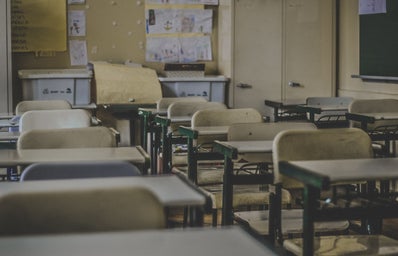Is it actually possible to safely reopen schools this fall in a way that will protect students, staff, families, and their communities safe from Covid-19? Is it possible to do this without harming them?
Already, school closures across America have set back students academically. Additionally, many students rely on both school breakfast and lunch to get through their day-to-day lives. There are many parents out there that are facing this tough decision as to whether or not to lose their job or leave their children at home unsupervised. By isolating students from their peers, social and emotional development is lost, but this does differ from age groups and are nearly hard to quantify. Whether schools choose to reopen or remain closed, the risks that arise from this subject is disproportionally burdened on low-income communities and people of color.
States and local governments have given many different guidance, much of which is urging schools to reopen and suggesting safety precautions. Additionally, many media outlets have shared their piece from conflicting experts on how to weigh risks and benefits to the individuals and their society. In any case, there are still major gaps in our understanding of what to do since no one knows what the Coronavirus has in store for us and how it will affect children and those that come into contact with them.
There is strong evidence that suggests that children are much less likely to get sick or die from the Coronavirus (data gathered from July 9, data represented from most of the U.S. showed that nearly 242,000 children had tested positive for Covid, representing 8 percent of cases, the American Academy of Pediatrics reports; they account for fewer than 3 percent of hospitalizations and fewer than 1 percent of deaths.) However, does this go to show that children are less likely to be infected, or just less likely to show signs of the virus? Additionally, what factors would determine whether children become seriously ill? But, the most crucial part for reopening schools, what are the odds that students will transmit the virus from one another, or to adults?
There are many scientists that have tried to use studies to determine if it is truly safe for children and staff to return to schools, however, many of these studies are still inconclusive as to how this would proceed to work out. This mainly stems from the fact that the Coronavirus and the data gathered tends to change sporadically and the consensus of data shifts as well. When researchers looked to other countries where students have returned to schools, they found “very few” scientific publications, and so relied mainly on news reports.
However, in all cases, they observed that schools adopted safety measures, which included wearing face masks and social distancing. Additionally, many countries did not start allowing their children to return to school until the national rates of infection had significantly declined; there is, unfortunately, no evidence to suggest what the outcome would be of opening schools in the U.S. where cases are surging.
In the opinion of many, and mine as well, they feel that it is unsafe to open schools at the present moment. Right now, the U.S. has the most cases, as well as the highest infection rate in the world. Since there is no definitive way to test students, get test results back quickly and trace the contacts of the student, it will be impossible for schools to tell who has the virus, and whether the virus is circulating itself on campus. When students and staff inevitably get sick, it will be up to the individual schools to debate about whether or not to shut down or stay open without any more useful information to help guide them. To add to this, without being able to get schools the tools and data necessary to strike the best possible balance between education and health, it will be almost impossible to definitively say whether schools should reopen or not.



